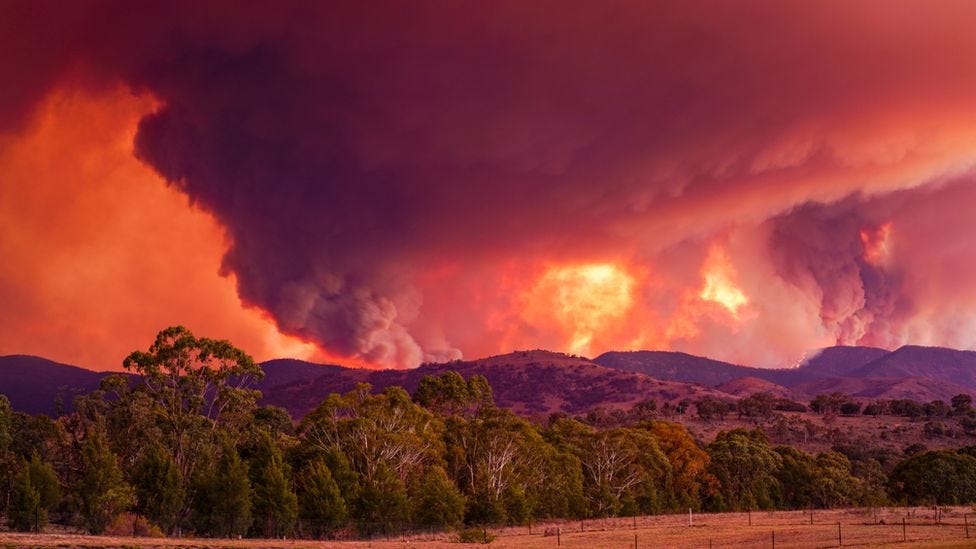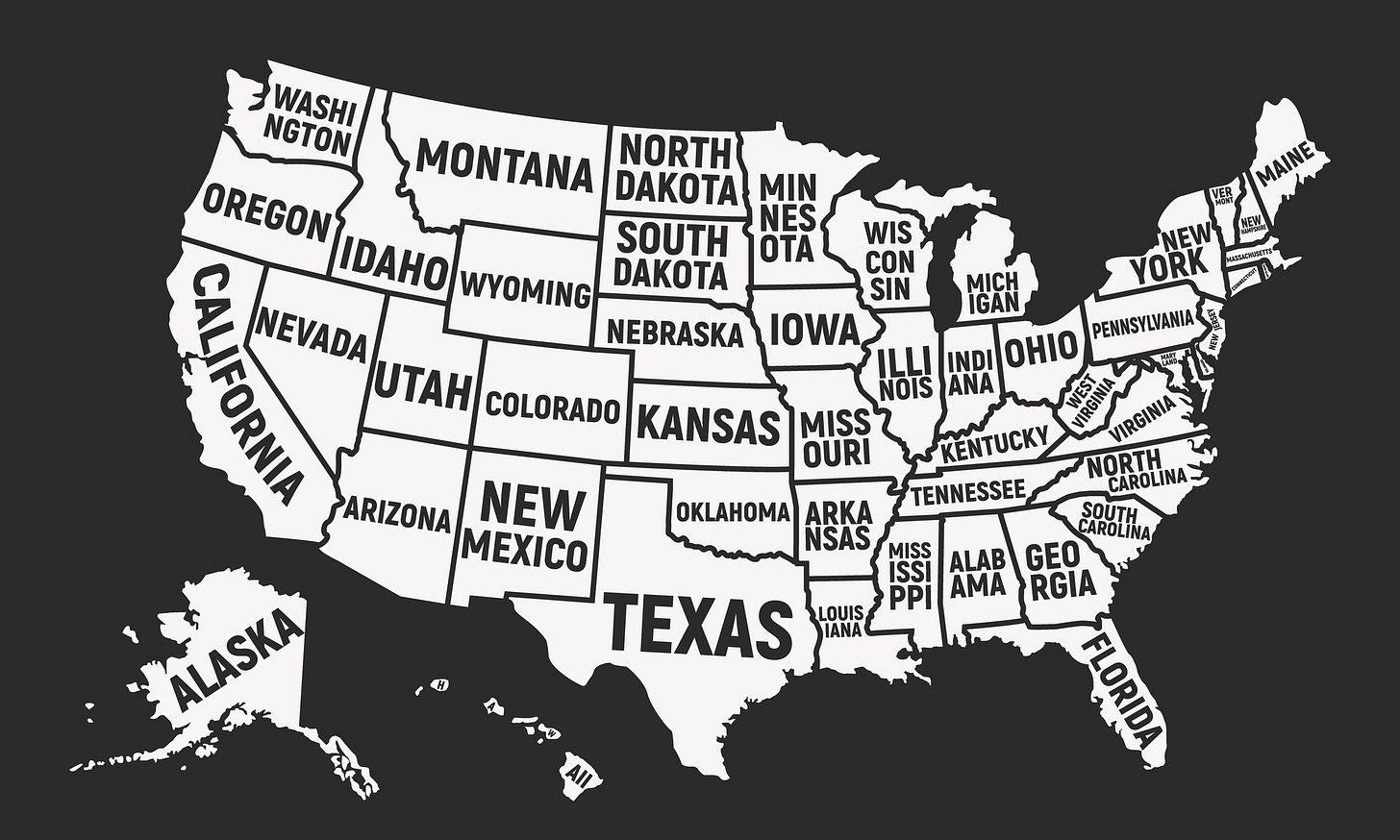#3: What Does A Billion-Dollar Disaster Cost You?
We hear about the rising number of billion-dollar natural disasters in the news often. But what does this mean? What does it cost you, and what are the implications of them happening more often?
PRESSED FOR TIME?
Everything around you — airports, roads, sewer upgrades, public schools or hospitals — is typically paid for by raising money through municipal bonds. Disasters place huge pressure on the investment attractiveness of a location. Yields for muni bonds don’t appear to incorporate the risk of climate change yet. Every city we live in is facing a ticking clock of choices, and they haven’t figured out how to tell us — their citizens — what it’s really going to cost. This matters.
PERSONAL DISASTER OR NIGHTLY NEWS STORY?
We have an oddly detached relationship to disasters. Most of our lives, they are something happening elsewhere, over the horizon. We will watch many more disasters unfold on the news than we ever live through. But as we discuss a lot on Climate and Money, we are affected by events near and far in ways we don’t fully appreciate.
THE BIG NUMBERS IN A DISASTER
In 2020, there were 22 weather/climate disaster events with losses exceeding $1 billion each to affect the United States. Is this high or low, you might ask?
The previous record of billion-dollar events was 16, and took place in 2011 and 2017. The annual average from 1980-2020 is just 7.
So yes, 2020 shattered records and averages.
What does a billion-dollar disaster actually involve? Well for one, it’s money that wasn’t used on something if the damage had never taken place. For a rule of thumb, a billion dollars will pay for whichever of these is the easiest mental prompt for you:
A new 500-bed hospital in a major American city (Link)
Two miles of new underground subway line in Boston or Seattle (Link)
Medicaid coverage for 280,000 extra Americans each year (Link)
The number of natural disasters costing at least $1 billion has increased since 1980

HOW COSTLY CAN THESE DISASTERS GET?
If we now have the cost to society of just one billion dollars framed in our mind, let’s consider the five largest natural disasters in the United States (adjusted to 2020 dollars):
Hurricane Katrina (2005): $180 billion
Hurricane Harvey (2017): $131 billion
Hurricane Maria (2017): $94 billion
Superstorm Sandy (2012): $70 billion
Hurricane Irma (2017): $52 billion
It’s crucial to understand no two events are the same. Hurricanes cause damage due to a combination of wind, storm surge and rain, but the proportions vary. For Superstorm Sandy, the storm was no longer a hurricane when it came ashore, but it was a large storm (in diameter) that happened to strike at high tide, exacerbating the storm surge and pushing water far inland. In Hurricane Harvey’s case, it was the extreme rainfall: once the storm lurched ashore near Rockport, Texas, (as a Category 4), it stalled over one of the most densely populated areas of the Gulf Coast.
Hurricane Katrina (2005) however is the truly cautionary tale for our climate-change century, if for no other reason as the example of how supposedly robust, interconnected systems of response are more fragile than we wish to admit. 80% of the city flooded to some depth, and many sensitive public services (water, waste management, law and order) buckled under the pressure. The population has never returned to pre-storm levels: think about that. Many famous old suburbs of New Orleans have homes go unsold for $50,000, and land banks pay several hundred thousand dollars each year just to mow the lawns of vacant lots. Who was hit hardest? Black and minority communities, who often lived on the lowest and most exposed land. We will return to this challenge in future newsletters.
Now let’s consider the five costliest disasters globally, excluding the United States (2020 dollars):
Tohoku Earthquake and Tsunami (2011): $423 billion
Great Hanshin Earthquake (1995): $339 billion
Sichuan Earthquake (2008): $181 billion
Australia Summer Bushfires (2019-2020): $74 billion
Thailand Floods (2011): $50 billion
Why include earthquakes when they’re as old as the Earth and not something climate action can do anything about? Well the earthquake might be unavoidable, but the way we’ve structured and organised our cities for disruptive events affects the final cost a lot. Why isn’t the 2004 Asian Tsunami in this list, when it killed over 230,000 people? Surprisingly, the total cost in damages for one of the world’s most significant 21st Century events was ‘only’ $20 billion. For comparison, the 2020 Beirut Port Explosion might end up more costly in property damages.
THE PRICE TAG MATTERS
And this is one of the most important takeaways of this newsletter issue: if you live in a prosperous city, with jobs, assets and value at risk, then even a small disaster costs a lot. It doesn’t make the value of a community in Indonesia or Thailand worth less in moral terms, but the simple arithmetic is there is more economic value at risk if the same storm hits Lower Manhattan. Price drives priorities. And as we always say at Climate and Money, someone has to pay.
BOND PRICES: THE INVISIBLE LEVERS OF OUR LIFE
This is where the bond market enters the story. A municipal bond is a debt issued by a state or municipality to fund public works. If you are a bondholder, you are (for once) the bank. Through the power of the market, bondholders decide if the city you live in runs itself well, thinks about long term problems and will pay back the debt on time (and with a little extra called the yield).
For example, before Hurricane Katrina hit in 2005, New Orleans had already been struggling financially and was rated BBB+ by S&P—near the low end of the investment-grade spectrum. Approximately two months after Katrina, S&P downgraded many New Orleans issuers to B – which is considered “junk.” It took eight years to recover, which means the city was paying higher costs to get debt for that entire recovery period — the market simply didn’t have confidence in the city.
More generally, how big is the ‘muni’ bond market? $4 trillion. With all the chaos of the world right now, muni bonds looks peaceful: this is partly because two-thirds of the market is owned by retail investors who buy them for their tax-exempt status and rarely trade them. But the real-world financial situation is alarming.
Many American cities went into deficit during the pandemic, with wealthy residents leaving, public transport revenue grinding to a halt, and teachers, firefighters and medical staff being asked to leave their jobs without help. Unfunded pension liabilities for state and local governments across the United States total somewhere between $5 and $10 trillion. One of the major difficulties in flowing aid dollars from the federal government to local governments is how to prevent huge diversions into this pension and benefit quagmire — a problem not related to Covid-19 that’s been building for decades.
The issue of how cities and towns explain to their population the money isn’t there for the quality of life they expect, is going to bedevil state and local politics worldwide in the 2020s
ENTER THE CLIMATE…
Physical climate risks create problems for cities in a few different ways —
They erode a municipality’s tax base (less people move into a location with risk, and others move away)
They create economic disruptions (festivals and conferences are cancelled, and sometimes relocated to other locations permanently)
They strain liquidity (funds for the school or highway upgrade need to be diverted after an extreme event)
They impair assets, batter structures and accelerate the need to do repairs
Charles Schwab compared some similarly rated airport revenue bonds, maturing close to 30 years from now. They were from Denver; Broward County, Fla., which is on the eastern coast of Florida and includes Fort Lauderdale; Houston; Miami and Chicago.

The risk of a climate shock, such as a hurricane or flooding, over the next 30 years is arguably much greater for Broward County, Miami, or Houston than for Denver or Chicago. However, yields for all bonds were nearly identical. In other words, investors weren’t getting higher yields for the potential risk of climate shock in this scenario.
Is it so hard to imagine your own city in this chart?
Historically, most municipal issuers affected by natural disasters have been able to manage through the financial impact caused by the disaster. If this wasn’t the case, there’d be a downgrade. What does this mean? When a bond is downgraded, its yield rises and its price generally falls (because it’s generally seen as a more risky investment). Detroit or New Orleans has a different price to Zurich in Switzerland, for reasons that would be obvious.
The market presently hasn’t priced in the climate risk. How long will that be the case?
The muni bond market has all the characteristics of complacency — the same orthodox thinking that assumes prior stability is going to be the norm in a future that’s more unstable. A bond analyst might look at their terminal screen and say: “over the last fifty years, we haven’t seen yields rise across the board following past natural disasters..”
This overlooks the fact that the annual number of billion dollar disasters is rising, and the final damages bill for a big disaster like Katrina, Maria or Sandy when they come, is rising too.
WHAT DOES THE FUTURE HOLD?
Politicians seem unwilling or unable to tell us our cities are hard to manage already without running up big deficits: there’s no reason for them to change when the cost of adapting to climate change is factored in. The city, state and federal levels of our national governments are so financially interconnected, it’s hard for one entity to take ownership and easy for all parties to avoid the hard conversation.
A large, interconnected risk without a clear solution? Sounds a lot like climate change.
3 Questions I Am Asking Myself This Week
1. Given such low yields in the markets, should Generation Y and Millennials be looking at municipal bonds at all in our investment future?
2. If Tesla (TSLA) has such a unique business model, why have more green economy firms not sought to replicate it?
3. Given the news of Arclight (ACTC) investing in Proterra, what would the future of Western cities look like if every bus is an EV? How might this change urban planning?
If You Read Or Listen To One Thing This Week
The Motley Fool: A Helpful Explainer on Municipal Bonds if the above newsletter didn’t make sense.




